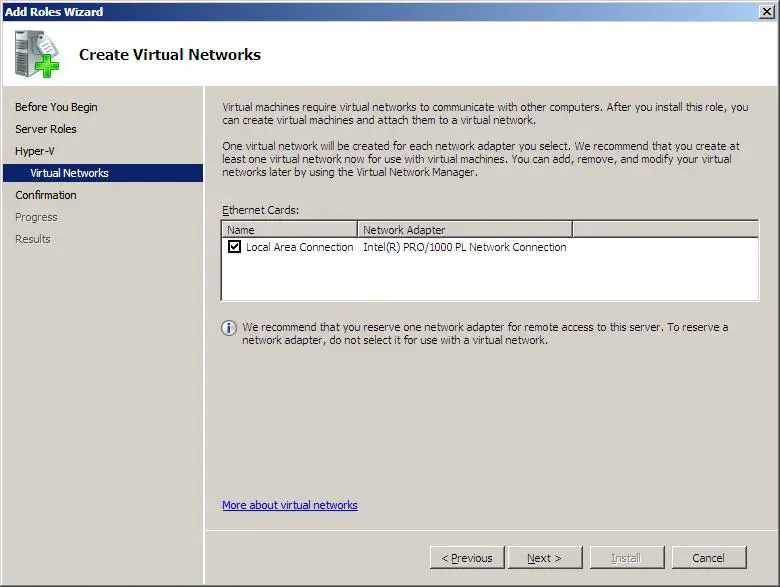Installing the Hyper-V Role
Microsoft Hyper-V is included as a standard feature of the 64-bit version Windows Server 2008 Standard, Enterprise and DataCenter editions. In addition, Hyper-V is available in both the full and core varients of these platforms. Hyper-V is not, however, installed and activated by default. The objective of this chapter, therefore, is to provide an overview of the steps involved in installing the Hyper-V role on a Windows Server 2008 system.
System Requirements
The remainder of this chapter assumes that a 64-bit edition of Windows Server 2008 is installed and running on a system with appropriate hardware to support hypervisor based virtualization. Detailed information on these requirements are outlined in the chapter entitled Hyper-V System Requirements.
Installing the Hyper-V Role from the Command Prompt
As previously mentioned, Hyper-V is provided by default with the 64-bit version of Windows Server 2008 Standard, Enterprise and Datacenter editions. Before it can be used, however, the Hyper-V role must installed. This process is achieved using the either the Server Manager tool, or via the command-prompt. To perform the installation at the command line, open a command prompt window with elevated privileges (right click on the command prompt icon in the Start menu and select Run as administrator from the resulting menu) and enter the following command:
C:\Users\Administrator>servermanagercmd -install hyper-v .. Start Installation... Warning: [Installation] Succeeded: [Hyper-V]. You must restart this server to finish the installation process. <100/100> Success: A restart is required to complete the installation.
Assuming this initial stage of the hyper-V installation process is successful, a reboot of the system will, as indicated by the above output, be necessary to complete the installation process.
Installing the Hyper-V Role using Server Manager
For those who prefer to using the graphical desktop environment to perform administrative tasks, the Hyper-V role may be installed using the Server Manager tool (Start->Administrative Tools->Server Manager). With Server Manager running, select Roles from the left hand panel followed by Add Roles in the main panel to invoke the Add Roles Wizard. If the Welcome screen is displayed, click Next to proceed to the Select Server Roles screen as illustrated in the following figure:
Select the Hyper-V role and click Next to proceed. The next screen will provide information about Hyper-V and its hardware requirements. After reading this information, click Next and to display the Create Virtual Networks screen.
In order to communicate with the external network, virtual machines need to be able to use a physical network adapter installed on the host computer system. Hyper-V controls this access by creating one or more virtual networks to which virtual machines are connected. In terms of access to the external network, there is a one to one correlation between virtual networks and physical network adapters installed into the host computer. Multiple virtual networks may not share the same physical network adapter. This stage of the Hyper-V installation process provides a list of network adapters detected on the host system and provides the option to select the devices for which virtual networks are to be created:
With the required network adapters selected from the list, click on Next to display the Confirmation screen, review the configuration information displayed and click Install to initiate the installation process. Complete installation of Hyper-V requires a system reboot.
Verifying the Hyper-V Installation
After the installation is complete Hyper-V should be installed and ready for use. To confirm that Hyper-V is installed, open the ??? manager (????).
Uninstalling the Hyper-V Role
C:\Users\Administrator>servermanagercmd -remove hyper-v .. Start Removal... Warning: [Removal] Succeeded: [Hyper-V]. You must restart this server to finish the removal process. <100/100> Success: A restart is required to complete the removal.



